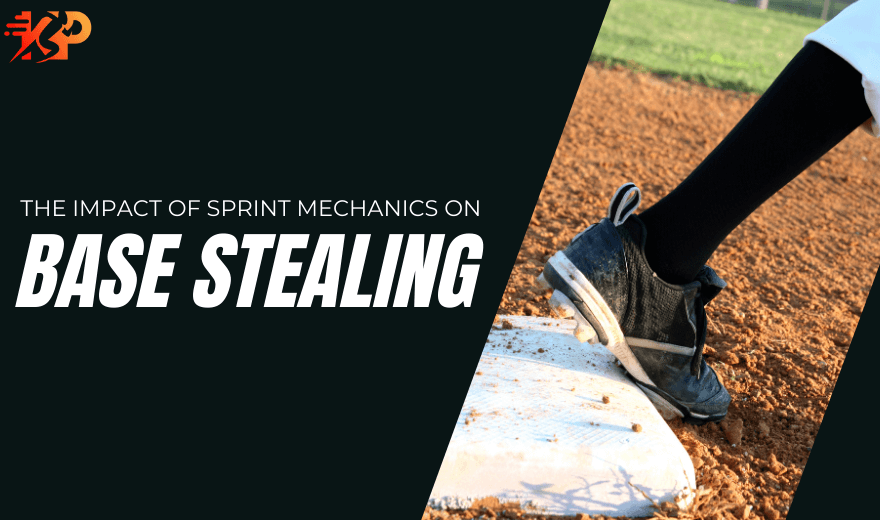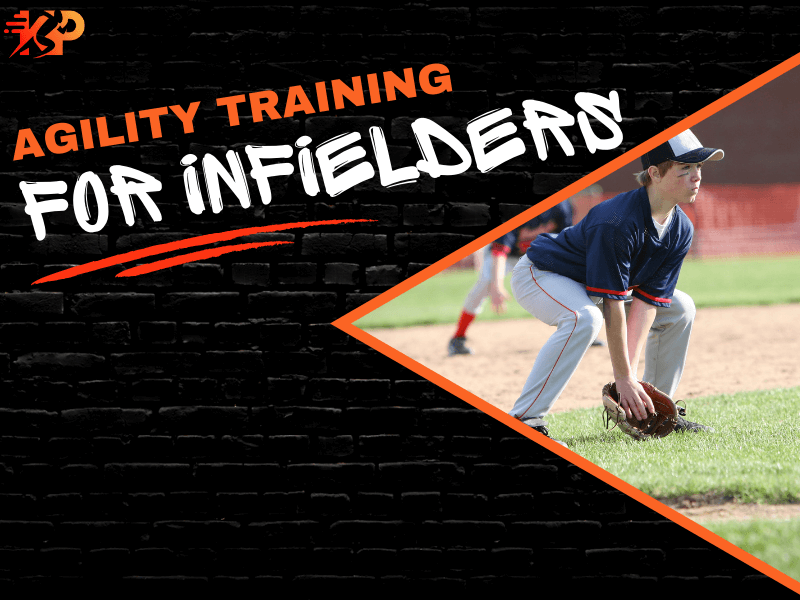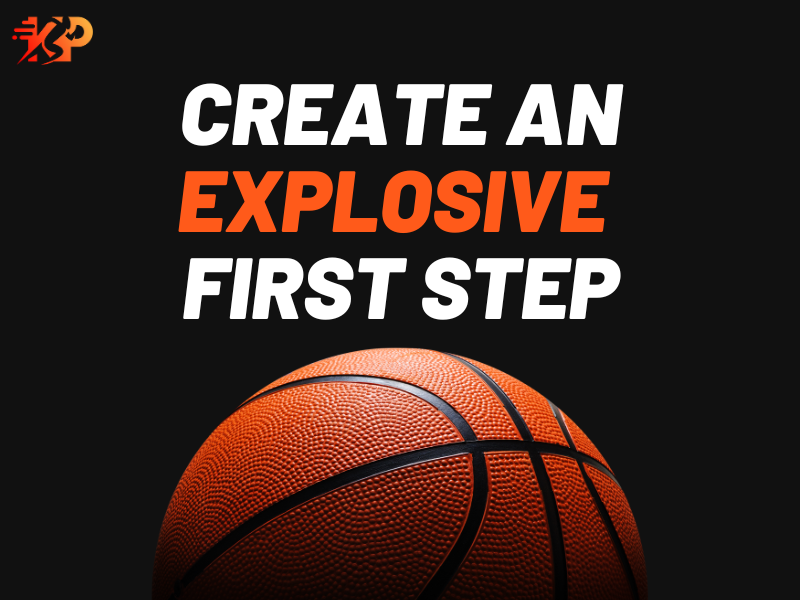The Impact of Sprint Mechanics on Base Stealing

By Mark Keil, CSCS
Posted on September 19, 2024

By Mark Keil, CSCS
Posted on September 19, 2024

In baseball, few plays are as thrilling as a stolen base. Speed is undoubtedly essential for a player aiming to excel in base stealing.
In this article, we’ll explore how sprint mechanics impact base stealing and highlight specific drills to help players optimize their form for maximum speed and efficiency.
Why Sprint Mechanics Matter in Base Stealing
Sprint mechanics refer to a player’s running technique, including body posture, stride length, foot placement, and arm action.
Efficient mechanics allow players to maximize their speed and reduce wasted energy, enabling them to cover ground quickly.
Poor sprint mechanics, on the other hand, can lead to slower acceleration, decreased top speed, and even an increased risk of injury.
Refining sprint mechanics is critical for base stealers, who must go from stationary to full speed as quickly as possible. The goal is to create a streamlined, powerful stride that propels the runner forward with minimal resistance.
Critical Components of Sprint Mechanics
Several key components of sprint mechanics directly impact a player’s ability to steal bases successfully:
1. Starting Position and Acceleration
The start is the most crucial aspect of base stealing.
A player must react quickly to the pitcher’s movement, exploding from their lead-off position. Proper acceleration mechanics involve a low, forward-leaning posture, powerful strides, and rapid leg turnover.
Efficient acceleration requires strength, explosive power, and proper sprint mechanics. The first few steps should be short and powerful, pushing off the ground with force to build momentum quickly.
2. Stride Length and Frequency
Stride length refers to the distance covered with each step, while stride frequency is the rate at which a runner’s feet hit the ground.
There is often a trade-off between stride length and frequency; longer strides can cover more ground but slow down the stride frequency if not executed properly.
Successful base stealers often optimize stride length and frequency to achieve maximum speed. This balance allows them to cover the distance to the next base in the shortest time possible.
3. Foot Placement
Where and how runners place their feet during sprints is crucial for maintaining speed and stability.
Ideally, the feet should land directly under the hips, not too far in front or behind, to maximize forward propulsion.
A mid-foot strike is often the best approach, as it balances speed and stability while reducing the risk of injury.
4. Arm Action
The arms play a significant role in sprinting mechanics, helping to maintain balance and drive momentum.
Proper arm action involves a powerful, controlled swing of the arms, with the elbows bent at about 90 degrees. The movement should be front-to-back, with minimal side-to-side motion to avoid wasting energy.
Effective arm action can significantly enhance the athlete’s speed by helping to maintain rhythm and balance throughout the sprint.
5. Body Posture
A forward-leaning posture is essential during the initial phase of the sprint to help with acceleration.
As the runner gains speed, the body should gradually move to a more upright position. Proper posture reduces drag and allows the runner to move more efficiently toward the base.
Drills to Improve Sprint Mechanics for Base Stealing
To improve sprint mechanics, players should incorporate drills that focus on refining their technique and enhancing the specific aspects of sprinting relevant to base stealing. Here are a few effective drills:
1. A-Skip Drill
Objective: Improve knee drive, stride frequency, and coordination, which are critical for explosive acceleration.
Execution:
- Start in a standing position. Begin by skipping forward, focusing on driving the knee of the leading leg toward the chest while keeping the foot dorsiflexed (toes pointing up).
- Simultaneously, swing the opposite arm in a natural running motion. Each skip should be quick and powerful, mimicking the motion of sprinting.
Benefits: The A-skip drill reinforces knee drive and arm action mechanics, helping players achieve a more efficient and powerful sprinting form.
2. Resisted Sprints
Objective: Build explosive power and improve acceleration, which is especially useful for starting a stolen base attempt.
Execution:
- Use a parachute.
- Begin in a base-stealing stance, then sprint forward with maximum effort while the resistance creates additional tension.
- Focus on driving the legs hard and maintaining proper posture throughout the sprint.
Benefits: Resisted sprints increase the strength and power of the leg muscles, enhancing the player’s ability to accelerate quickly from a stationary position. This drill also helps reinforce proper sprint mechanics under tension, which translates to more explosive starts in game situations.
3. Wall Drive Drill
Objective: Develop proper body posture and drive mechanics during the acceleration phase of a sprint.
Execution:
- Stand facing a wall at arm’s length, with your hands on the wall for support (the hands should be directly in line with your shoulders).
- Lean into the wall, stand on the toes, and create a forward angle with the body. The athlete should be in a straight line from their shoulders through their ankles.
- Begin by driving one knee forward, mimicking the start of a sprint.
- Hold for a second, then quickly switch legs, driving the other knee forward.
- Repeat this motion rapidly, focusing on maintaining a strong forward, lean, and explosive knee drive.
Benefits: The wall drive drill helps the athlete learn proper posture for the acceleration phase of the sprint (which is critical in base stealing).
4. Falling Starts
Objective: Enhance reaction time and explosive acceleration from a standing position.
Execution:
- Stand upright with your feet shoulder-width apart.
- Begin to fall forward, keeping your body straight.
- Just before you lose balance, explode into a sprint by driving your legs powerfully into the ground.
- Focus on maintaining a low posture during the initial steps to maximize acceleration.
Benefits: Falling starts to train the body to react quickly and accelerate explosively, simulating the quick start needed when stealing a base.
5. Straight-Leg Bounds
Objective: Improve stride length and leg power, contributing to more efficient and faster sprinting.
Execution:
- Start standing.
- Begin bounding forward with straight legs. Focus on driving each leg forward powerfully, keeping the toes dorsiflexed and the foot landing under the hips. Arms should swing naturally to aid in balance and momentum.
Benefits: This drill enhances the power and efficiency of each stride, helping players cover more ground with each step during a sprint. It’s beneficial for improving the mechanics of mid-sprint phases, where maintaining speed is crucial.
Integrating Sprint Mechanics into Base Stealing Strategy
Understanding and improving sprint mechanics is just one piece of the puzzle regarding base stealing. The athlete must combine sprint mechanics with keen observation skills.
Practice is vital to integrating improved sprint mechanics with the timing required to steal bases successfully. Players should regularly practice taking leads and attempting steals, focusing on both mechanics and timing.
Conclusion
Sprint mechanics play a vital role in base stealing.
Players can optimize their speed and efficiency by focusing on critical aspects such as acceleration, stride length, foot placement, arm action, and body posture.
Incorporating specific drills, such as the A-skip drill, resisted sprints, and wall drive drills, into a regular training routine can help players refine their mechanics and enhance their ability to steal bases effectively.
If you’re looking for Speed & Agility Training near you that will increase your athlete’s base stealing speed, then check out my program. I’ve worked as a performance coach with JUCO, D1 Collegiate, and MiLB Baseball Teams. And I train dozens of athletes every week on how to run faster.
We train out of World Baseball Outreach. Click here to Try It Free!
Training Resources



